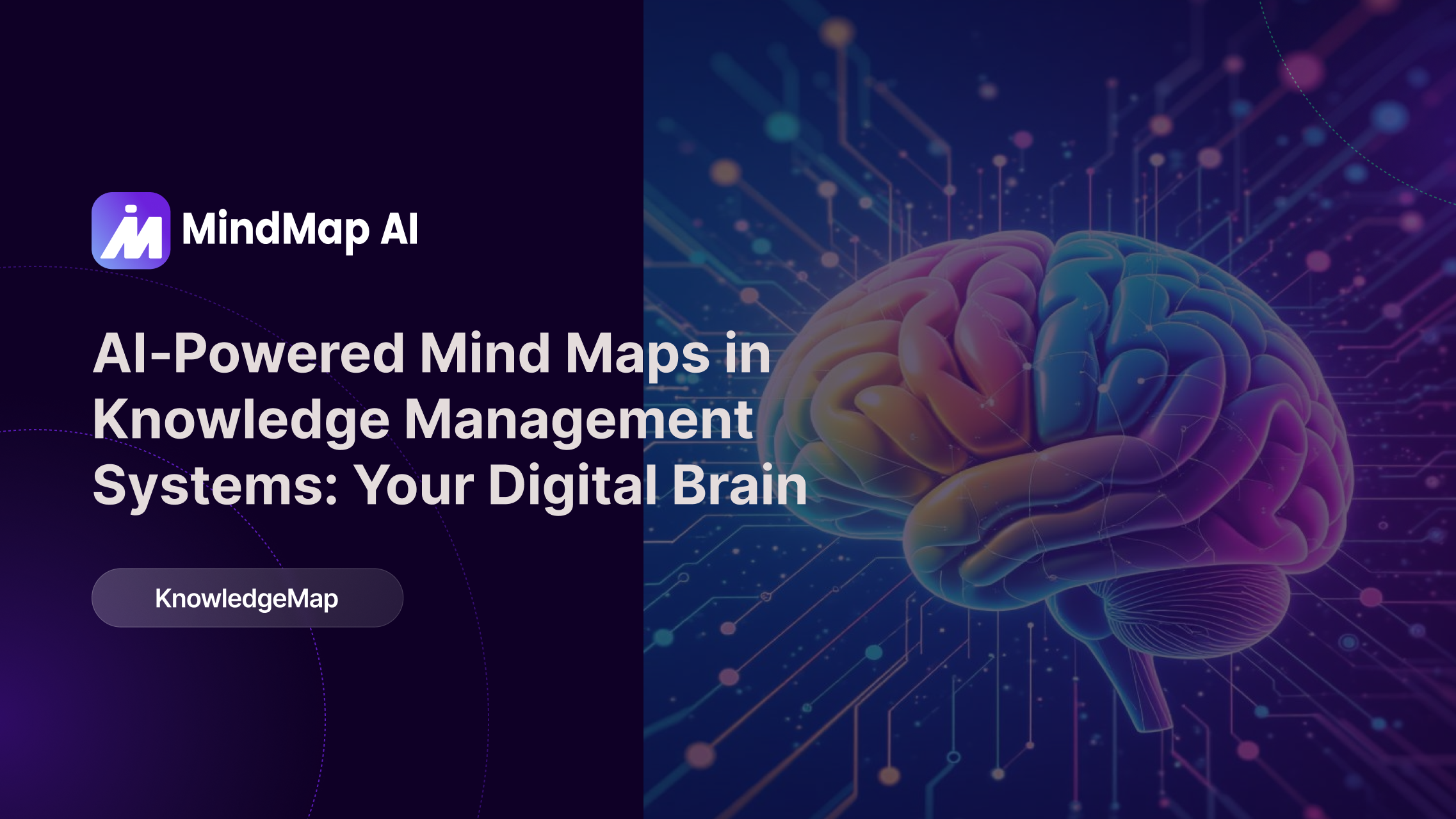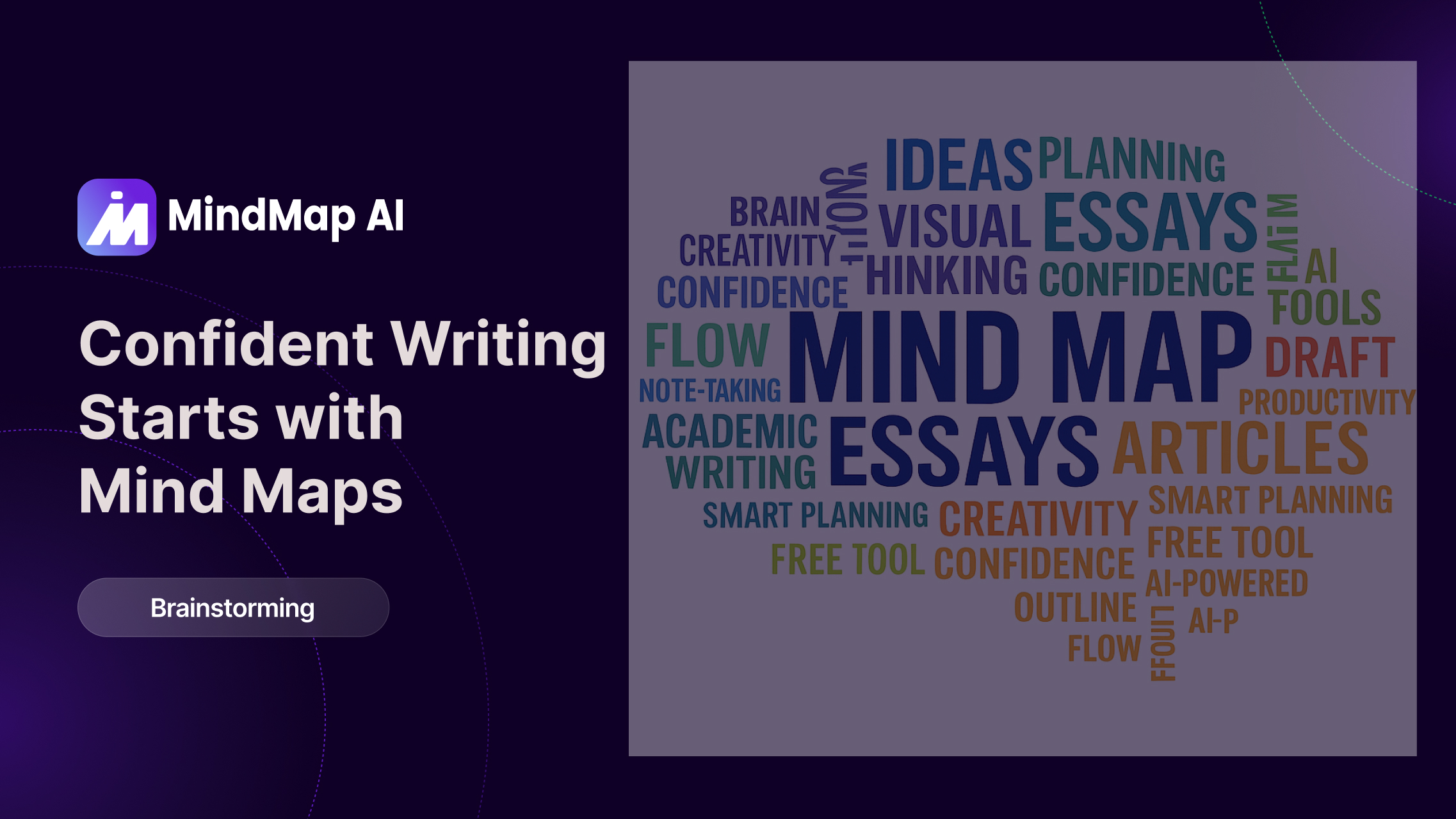
AI‑Powered Mind Maps in Knowledge Management Systems: Your Digital Brain
Our minds hold vast networks of insights-but too often, this knowledge remains fragmented across documents, inboxes, or (worse) disappearing when employees leave. That’s where knowledge management systems software comes in: it captures, organizes, and connects expertise within your organization.
Now, AI‑powered mind maps are elevating this capability, turning static information into dynamic visual knowledge. Imagine a digital brain that visually represents concepts, learning paths, and tacit employee insights-ready to be explored, expanded, and passed forward.
In this article, we explore how AI mind maps unlock your “second brain,” how they capture tacit knowledge across roles, support career navigation, and automate learning journeys-all within the context of a modern knowledge management platform.
AI and Knowledge Management Systems for Clarity

Visual thinking aligns with how humans naturally learn. AI mind mapping replicates this by turning linear notes into radial, branching structures that reveal relationships-so nodes radiate from central ideas, much like neurons firing in your brain. This structure improves recall by up to 32%, making complex information intuitive and memorable.
In fact, studies have shown that using mind maps can improve long-term retention by 10-15% compared to conventional note-taking methods, proving their cognitive effectiveness.
When applied within knowledge management systems software, this visual clarity transforms fragmented ideas into organized insight-your digital brain in action.
AI‑Powered Mind Maps in Knowledge Management Systems
Knowledge management platforms now embed AI mind map generators that ingest documents, transcripts, or knowledge base articles and output structured visual maps. These aren't static charts; they're interactive, expandable networks that invite exploration.
With AI suggesting related nodes and pathways, teams discover connections that may have gone unnoticed, aligning institutional knowledge with human intuition. This capability amplifies learning, collaboration, and strategic awareness.
Using Knowledge Management Systems to Capture Tacit Knowledge
Retiring employees, role transitions, and departures risk losing institutional memory. AI mind maps provide a compelling solution by capturing tacit knowledge, like workflows or decision rationale, as visual maps anchored in internal documentation.
These maps effectively preserve expertise, trace learning lineage, and make onboarding more efficient. Instead of relying on exit interviews or manuals, organizations can inherit structured insight directly through visual knowledge paths.
How Knowledge Management Systems Save Tacit Knowledge

A visual map of departmental workflows, client onboarding sequences, or product decision trees becomes a live, navigable structure populated by both AI-summarized content and user contributions. Knowledge gaps or stale paths are identified and filled through collaborative editing. This living digital brain captures changes in roles or strategy, and can be continuously refined-ensuring that knowledge evolves with your people, not disappears with them.
Knowledge Management Systems Software for Learning Paths
Static learning paths often feel outdated or disconnected. With a digital asset management platform that incorporates AI mind mapping, training modules can be mapped visually with pre-requisite nodes, branching learning trajectories, and competency milestones.
Employees can see exactly where their learning takes them and how it interconnects with broader organizational needs. As content evolves, whether AI-generated or internally authored, maps adapt accordingly, replacing one-size-fits-all training with dynamic, personalized growth paths.
Knowledge Management Systems Software for Career Navigation
Think of AI mind maps as interactive career compasses. Each user starts with foundational nodes aligned to their role-progressing along visual branches like new skills, promotions, or lateral moves. This empowers individuals to self-navigate career learning.
With integrated analytics, organizations can even surface suggested branches or mentor connections, reinforcing growth in real-time.
Smart Insights from Visual Input

Advanced AI mind maps treat visual input as first-class content. Upload an infographic, whiteboard sketch, or diagram-and AI converts it into structured maps. Panels transform lines and labels into node hierarchies, giving visuals voice in your knowledge system.
Beyond this, AI tools powered by natural language processing and image recognition can analyze the uploaded visuals and suggest restructured layouts, identify key concepts, and surface connections that a basic scan might miss.
This capability accelerates knowledge capture by transforming visual clutter into clarity, improving retention, stimulating creativity, and empowering users to quickly refine insights with minimal effort.
Why Knowledge Management Systems Software Matters
Knowledge management platforms are growing fast. As per industry projections, the global market for these platforms is expected to expand significantly in coming years.
Visual KM systems deliver that: global KM platform usage grew rapidly last year, with AI-integrated KM platforms increasing knowledge retention and onboarding effectiveness. Moreover, according to IDC, AI-enhanced KM systems improve productivity by over 30% across teams.
By incorporating AI‑powered mind mapping, these systems go beyond content storage; they transform individual brains into collective intelligence hubs. Teams gain clarity, new hires onboard faster, and institutional knowledge becomes transparent and scalable.
Final Thoughts
AI mind maps elevate knowledge management systems software from archives to living memory, turning documents and visuals into a dynamic, interconnected digital brain. They preserve expertise, illuminate learning paths, and guide career journeys.







